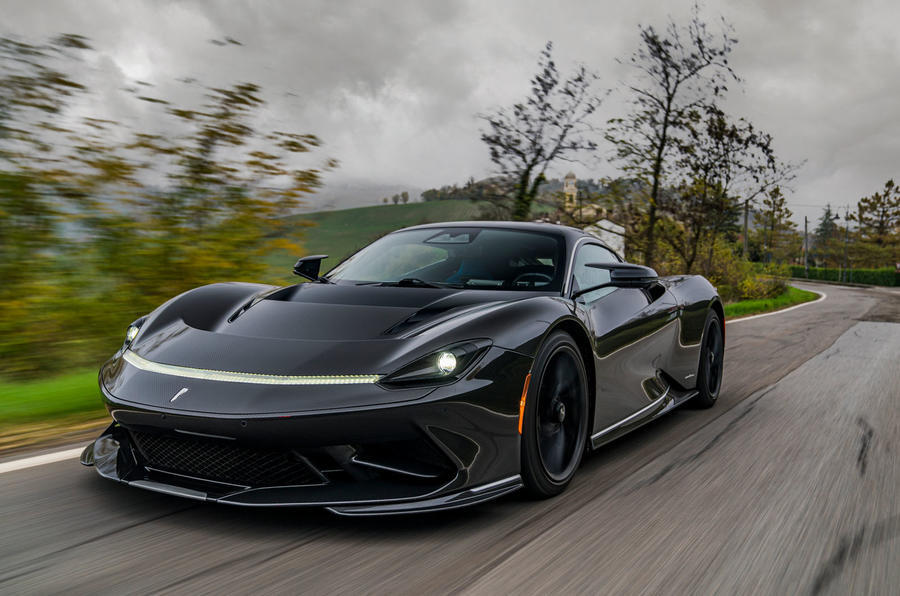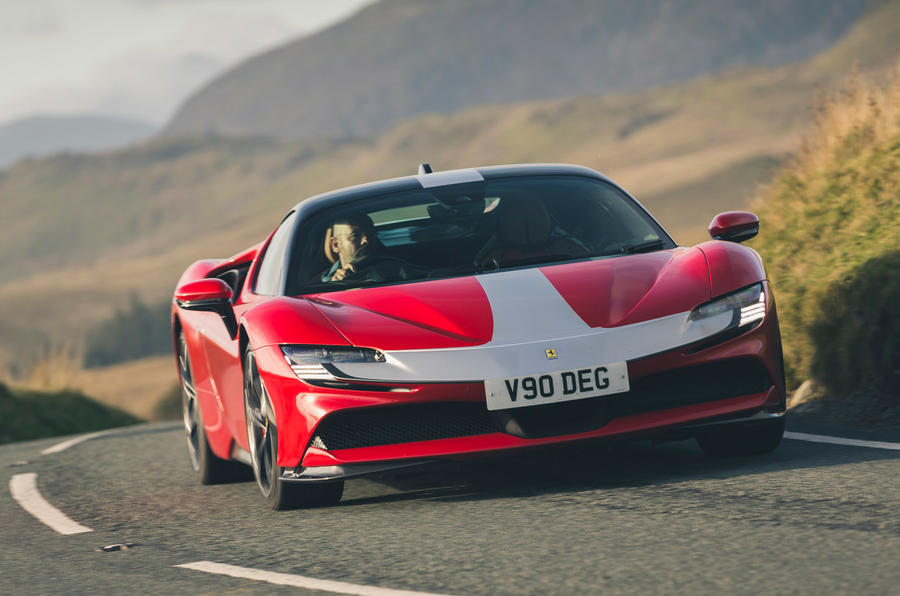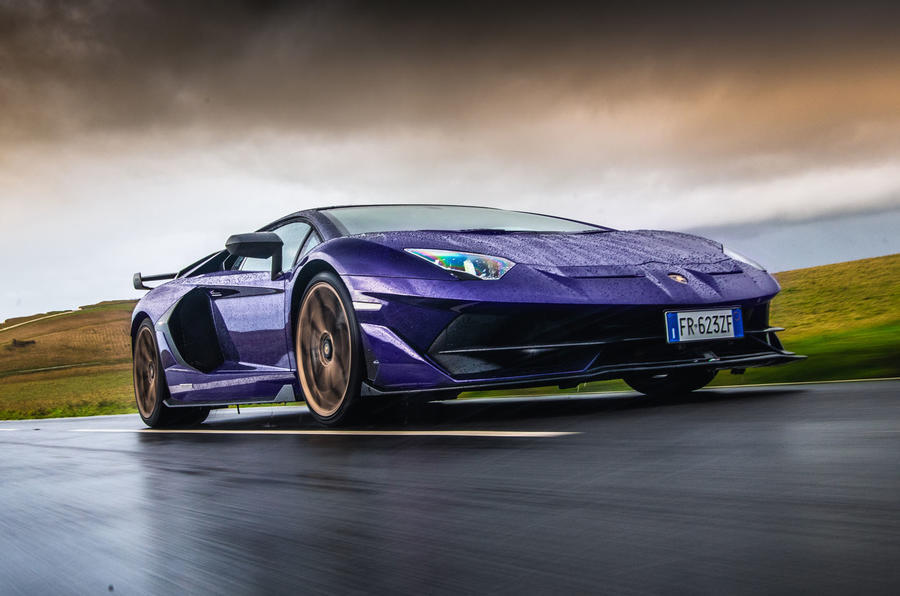Recent Updates
03/04/2024 12:00 PM
Range-topping Porsche Taycan due next week
03/04/2024 12:00 PM
Nissan Ariya 2024 long-term test
03/04/2024 12:00 PM
Hyundai Ioniq 5 update brings rear wiper and bigger battery
03/04/2024 12:00 PM
Jaguar goes SUV-only as XE, XF and F-Type bow out in June
03/03/2024 12:00 PM
Suzuki Jimny 5 door review: what exactly are we missing out on?
03/02/2024 12:00 PM
Future of Apple CarPlay: why tech giant is now working with car firms
03/02/2024 12:00 PM
Should UK motorists have to take driving licence refresher courses?
03/02/2024 12:00 AM
The world's fastest accelerating cars
03/02/2024 12:00 AM
Mercedes V-Class
03/02/2024 12:00 AM
Reports: Nissan in talks over £316m Fisker lifeline
EV, Hybrid, Hydrogen, Solar & more 21st century mobility!
 It's not all about top speed – reaching 60mph in under three seconds is a feat in itself
It's not all about top speed – reaching 60mph in under three seconds is a feat in itself
The world’s fastest-accelerating cars come in all shapes and sizes.
There are many types of cars on this list, from petrol to hybrid, and bare-bones sports cars to ludicrous saloons. Some of the world's fastest electric cars make an appearance, too.Â
What they all show is the idea that there’s not a single formula for sub-three-second sprints to 60mph (or 62mph, which is the figure most manufacturers quote, as it equates almost exactly with 100km/h).
This list is based on manufacturers’ official claimed times, and only includes production cars - some of the fastest cars the world has ever seen.Â
Modified models and track-only machines don’t make the grade. No one-foot rollout acceleration runs, either (sorry Tesla and Lucid). Didn’t manage less than three seconds? Then you aren’t on this list.
So sit tight as we run through the fastest accelerating cars money can buy.
Top ten fastest accelerating cars in the world
1. Aspark Owl - 0-60mph in 1.72 seconds

How much power does it take to dip under two seconds in an electric road car? Japanese manufacturer Aspark claims it's 1985bhp, courtesy of four separate electric motors and a 64kWh battery.
That’s almost twice the power of a Formula 1 car. It also clocked a 0-60mph sprint of 1.72sec at the Misano World Circuit.Â
Combined, the Owl hypercar weighs in at 1900kg, and has a theoretical top speed of 249mph. Only 50 will be made, and each will cost around £2.5 million.
The Aspark Owl set two world records in the UK in 2023Â
2. Rimac Nevera - 0-60mph in 1.95 seconds
![]()
Officially crowned as the world's fastest production EV, the Rimac Nevera reached 258mph at the hands of the firm's chief test driver Miro Zrncevic.Â
Complete with a 1887bhp electric motor, the limited-run Nevera is also the world's fastest accelerating car over the quarter mile taking just 8.582 seconds to complete a run.Â
Zrncevic said: “To travel at 412kph, or 258mph, means travelling at a third of the speed of sound. Simply achieving that alone in a road car is incredibly complex, but in [the] Nevera we've created a car that can travel long distances on a single charge and tackle tight and twisting race tracks".
Read our Rimac Nevera review here
3. Pininfarina Battista -0-60mph in 2.0 seconds

The first of our all-electric hypercars, the Battista shares much of its hardware with the Rimac C_Two, but with a little detuning that means it delivers 'only' 1877bhp.
Even so, performance is, ahem, electrifying, with the 0-60mph dash done and dusted in 2.0 seconds flat (although engineers are hoping the car will soon dip under that figure).
That's not the only thing about the curvaceous Italian machine that starts with a two - you'll need a cool £2 million if you want one parked on your drive.
Read our Pininfarina Battista review here
4. Ultima RS, Ultima Evolution Coupé – 0-60mph in 2.3 seconds

British brand, Ultima, is often overlooked in the track-ready supercar stakes, but it produces some of the most potent driver's machines money can buy, and in terms of performance per pound it's unrivalled.
The older Ultima Evolution is available with a supercharged 6.8-litre Chevy V8 that produces 1020bhp, while the newer and more sophisticated RS can be specified with a similarly supercharged LT5 V8, which pumps out 1200bhp.
Either way, the 0-60mph time is the same, at a rapid 2.3 seconds. The rest of the car is equally thrilling, and don't forget an Ultima was chosen as a rolling test bed for the McLaren F1's magnificent BMW V12.
5. Bugatti Chiron Super Sport - 0-62mph in 2.4 seconds
![]()
If you're looking to shave a tenth of a second off you're 0-62mph sprint then you'll need the Chiron Super Sport, which has had the wick on that remarkable W16 turned up to deliver 1587bhp.
Perhaps more important than the 0-62mph time is the 12.1 seconds its needs to get from standstill to 186mph.
That's about the same time an entry-level Ford Fiesta takes to get to 62mph.
Read our Bugatti Chiron Super Sport review
6. Bugatti Chiron, Ferrari SF90 - 0-62mph in 2.5 seconds

It was only a matter of time before the Chiron turned up in this list, the only real surprise is that it's not topping it. In its 'entry-level' guise, the Bugatti's quad-turbocharged 8.0-litre W16 delivers 1479bhp, which is good for a 2.5 second 0-62mph.
In many respects, the SF90 is arguably even more impressive, as it achieves the same time with 'just' fact that the 987bhp from its combination of twin-turbocharged V8 engine with a trio of electric motors.
Either way, both will deliver the sort of thrust that only Apollo astronauts are likely to have experienced.
Read our Ferrari SF90 Stradale review
7. Porsche 911 Turbo S (992), Radical RXC GT - 0-62mph in 2.7 seconds

Again, it's two very different takes on the performance car template that feature in the 2.7 seconds club, even if one hits stops the clock travelling at 62mph and the other and 60mph.
The latest 911 Turbo S relies on a 642bhp twin-turbocharged flat-six, plus exceptional traction from its four-wheel drive transmisson and rear-engined weight distribution.
It also needs the launch control-equipped Sport Chrono Pack. By contrast, the Radical is essentially a race car for the road, complete with its 900kg of downforce capability.
Underneath bodywork that looks like it'd be happier hammering down the Mulsanne straight than mooching to the shops, the RXC GT features the same turbocharged 3.5-litre V6 as the Ford GT, which delivers 400bhp and 0-62mph in 2.8 seconds in standard guise.
For the 2.7 second bragging rights you'll need the upgraded 650bhp unit.
Read our Porsche 911 Turbo S review
8. Caterham 620R - 0-60mph in 2.79 seconds

All Caterhams feel insanely fast by their very nature, but the 620R backs up the impression it gives with actual statistics.
Powered by a 310bhp supercharged 2.0-litre Ford engine and featuring a six-speed sequential gearbox, it's arguably the most extreme Seven ever to wear a number plate.
Its place in this list is a little cheeky, however, as its quoted time of 2.79 seconds is a little too specific (most would round up or down to a tenth of a second), plus it's a 0-60mph sprint rather than 0-62mph.
9. Ariel Atom 4, McLaren 765LT, Lamborghini Aventador SVJ - 0-62mph in 2.8 seconds

When it comes to hitting 62mph from a standstill in 2.8 seconds, then you’re rather spoiled for choice. There are some staggering choices here.
The Ariel Atom 4, Koenigsegg Regera, Porsche Taycan Turbo S, McLaren 765LT, Radical SR8, Lamborghini Aventador SVJ, Lamborghini Aventador 780-4 Ultimae to name but a few.Â
Not only that, but our list of contenders shows that there are several ways to skin a (startled) cat.
The lightweight, track-special vibe is taken care of by the skeletal Ariel Atom 4 and Le Mans-refugee Radical SR8, while at the other end of the spectrum is the luxurious yet ludicrously fast all-electric Porsche Taycan Turbo S.
And then there are the true supercars in the form of the hybrid Koenigsegg Regera, the hardcore McLaren 765 LT and the Lamborghini Aventador, which can hit this target time in both stripped-out SVJ and more civilised 780-4 Ultimae guises.
Read our Lamborghini SVJÂ review
10. Ferrari 296 GTB, Ferrari F8 Tributo, Lamborghini Huracán Evo, McLaren 720S - 0-62mph in 2.9 seconds

Breaking the three-second barrier is no mean feat, and yet multiple cars can now claim to achieve it.
In fact, the 2.9 second 0-62mph time appears to be something of a common thread, the suspicion being that this is about the limit for a mid-engined, rear-wheel drive car on road-biased tyres.
The McLaren 720S and Ferrari F8 Tributo both take a pure internal combustion approach, both using a twin-turbocharged V8, while the Lamborghini has its glorious, screaming naturally aspirated 5.2-litre V10.
The 296 GTB, however, gives us a glimpse of the future with its plug-in hybrid petrol-electric 3.0-litre V6, which at 819bhp is the most powerful of the lot.
Read our Ferrari 296 GTB review here
Â
